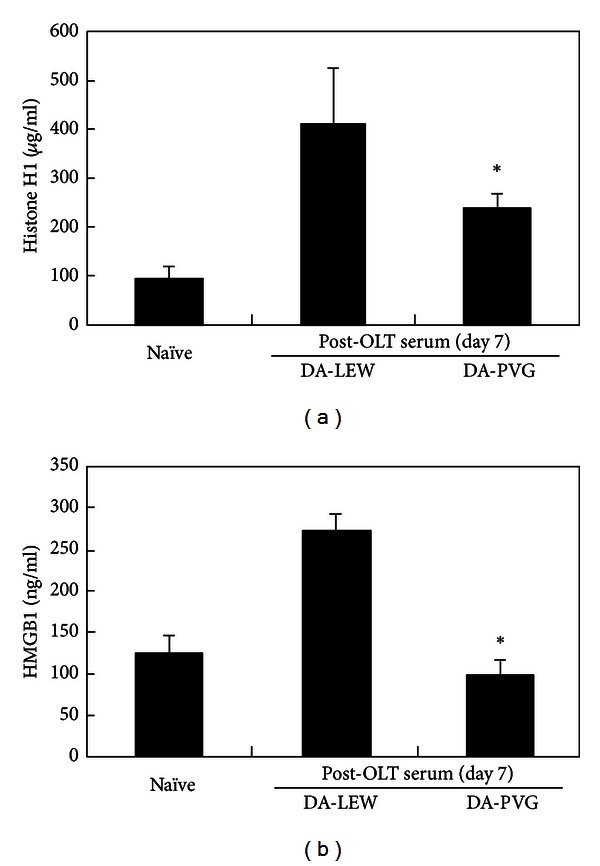Figure 2.

The elevation of circulating histone H1 and HMGB1 during the rejection phase after OLT. The levels of histone H1 and HMGB1 in naive or post-OLT sera were determined by ELISA. For the quantitative determination of histone H1, 0.1 μg of antihistone H1 polyclonal antibody (Santa Cruz Biotechnology, Santa Cruz, CA, USA) in 100 mM NaHCO3 (pH 9.3) was coated onto a 96-well microtiter plate (Nalge Nunc International, Roskilde, Denmark) by overnight incubation at 4°C. The plate was then blocked with SuperBlock T20 (PBS) Blocking Buffer (Thermo Fisher Scientific Inc., Rockford, IL, USA), and serum samples (each n = 3) (50 μL, ×25 dilution with 10 mM Tris-HCl (pH 8.0), 0.9% (w/v) NaCl, 0.5% (w/v) Tween 20) were added to the wells. Calf thymus histone H1 (Upstate, Charlottesville, VA, USA) was used as a standard. The mixture was incubated at room temperature for 1 hr. Antihistone H1 monoclonal antibody (×500 dilution; Abcam, Cambridge, MA, USA) was then added, and the mixture was incubated at room temperature for 1 hr. Peroxidase-conjugated anti-mouse IgG (×2,000 dilution; Santa Cruz Biotechnology) was then added, and the mixture was incubated at room temperature for 1 hr, followed by the addition of 1-Step Ultra TMB substrate solution (Thermo Fisher Scientific Inc.). For the quantitative determination of HMGB1, a rat HMGB1 ELISA kit (MyBioSource Inc., San Diego, CA, USA) was used according to the manufacturer's protocol. The absorbance (450 nm) was then measured using a Victor X4 Multilabel Plate Reader (PerkinElmer, Shelton, CT, USA). The results are expressed as the mean of three individuals ± SD. *Significantly different compared with the DA-LEW combination (P < 0.01, Student's t-test).
